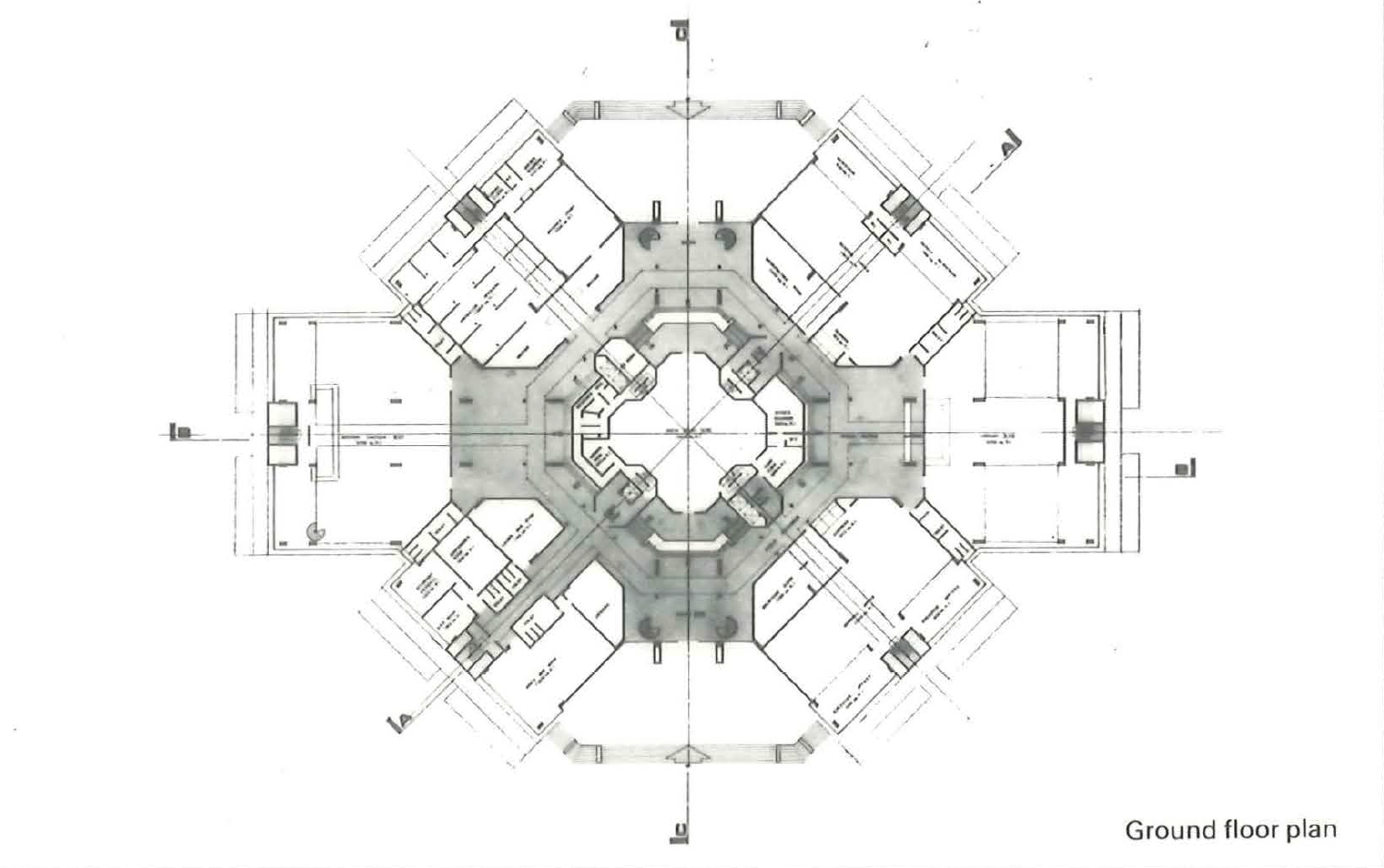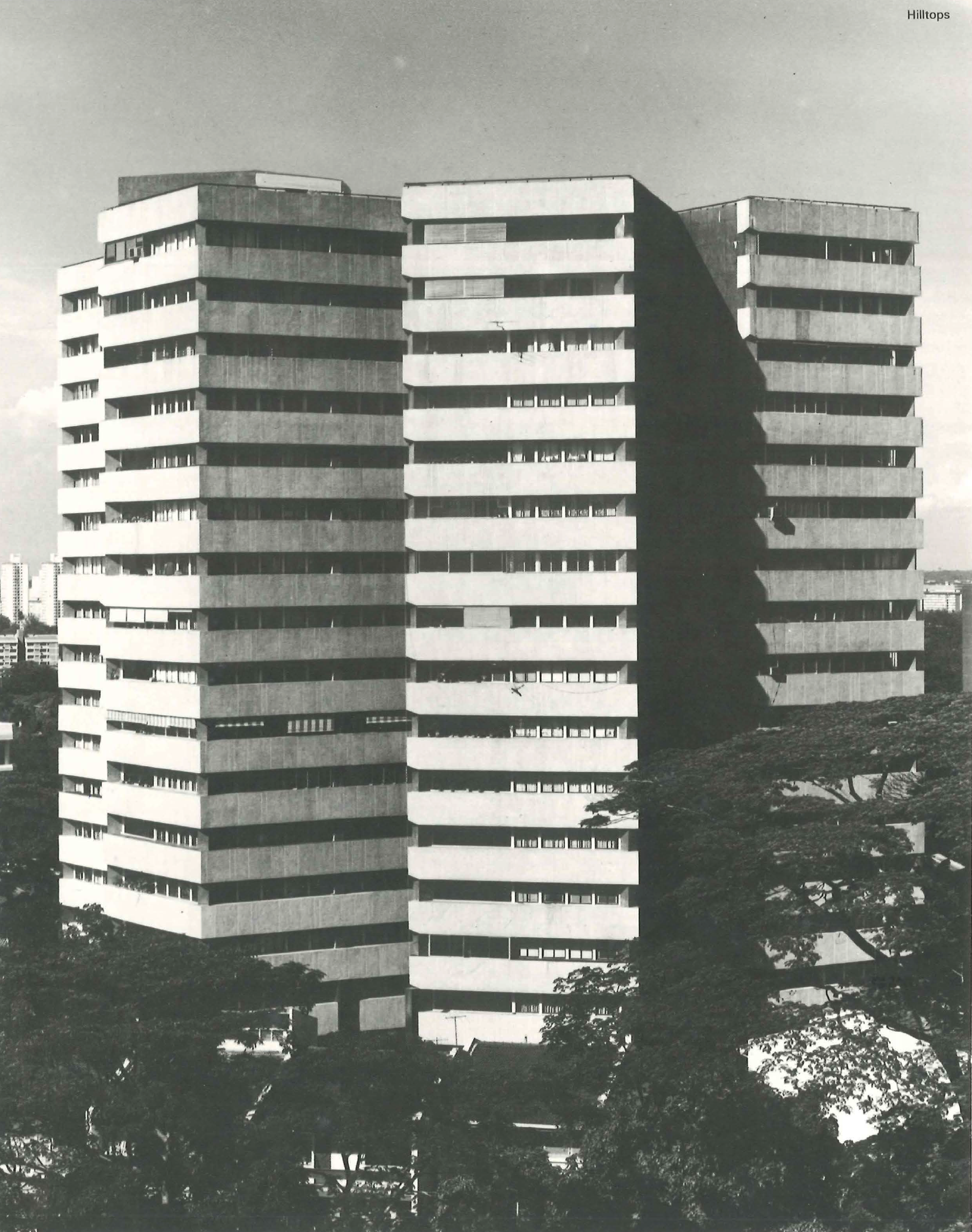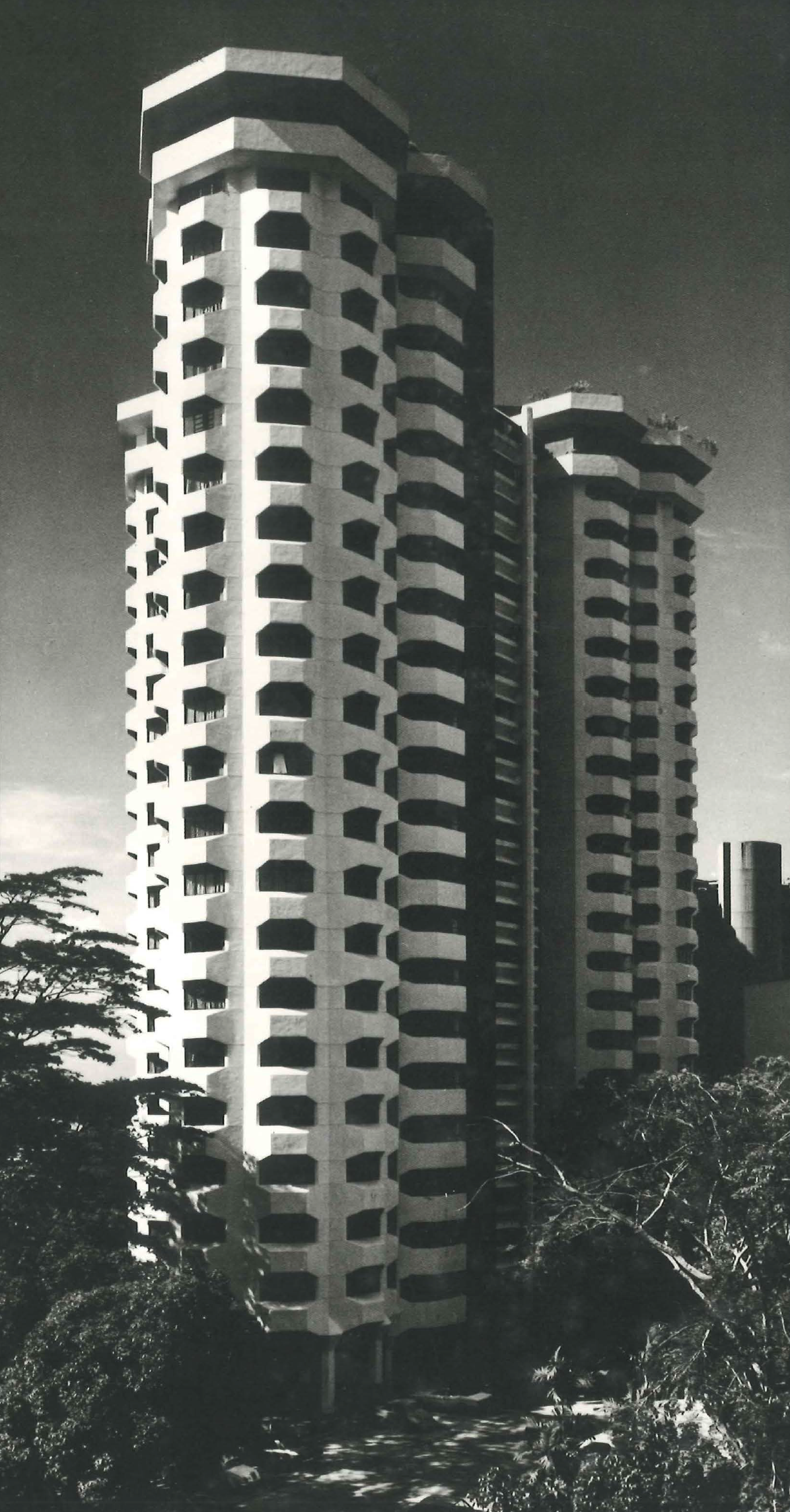Kumpulan Akitek
Photograph from a promotional brochure of the firm, c. 1970s. Source: Promotional brochure of the firm in the author’s collection
The firm has its origin as C. A. V. Chew and Partners that was founded by Victor Chew(1928-2021) in 1958. It was renamed as Kumpulan Akitek, which means an “ensemble of architects” in Malay in 1964 following the merger of Singapore and Malaysia in 1963. The new name signalled the firm’s affiliation with the newly-formed political territory. It had two offices—one each in Singapore and Kuala Lumpur—with jobs through the Malay Peninsula and East Malaysia. The founding partners were Victor Chew, Wee Chwee Heng (b. 1940), and Hisham Albakri (1930-2006). Chew and Wee ran the Singapore office and Hisham helmed the Kuala Lumpur Office.¹ They were later joined by Sonny Chan Sau Yan (b. 1941) and Chew Kum Chong as partners.² The new name also referred to the working culture of the firm, which was “based on team effort and not individual personalities.”³ The egalitarian ethos of collaborative work characterised a number of modern firms at that time, both locally and internationally. Locally, there was the important firm of Malayan Architects Co-partnership, which subsequently evolved into Design Partnership and Architects Team 3. Internationally, there were Architects Co-partnership in Britain (est. 1939), which inspired its Malayan namesake, and the Architects Collaborative (1945-1995) in North America.
The firm is best known for the Subordinate Law Courts (1975, conserved). The sculptural form of this building came from the firm’s trademark geometrically sophisticated handling of massing and space. Notably, volumes were carefully stacked and rotated around an octagonal central atrium in this building. A similar formal-spatial strategy is also evident in the early works designed by Victor Chew, particularly Hilltops (completed in 1965 and demolished c. 2000s). On each floor, 7 individual volumes—each containing an apartment—were rotated around an octagon, which served also as a void open to the sky. Other distinctive residential projects by the firm include Highpoint Apartments (1974) and Townhouse Apartments (1976).
Kumpulan Akitek was also known for their hotel projects. They renovated Goodwood Park Hotel in the 1960s and designed Ladyhill Hotel (1968) and Ming Court Hotel (1970) at a time when the government was actively promoting tourism as a sector for economic growth. Ladyhill Hotel in particular was designed with a simple construction of concrete frames and exposed bricks so that it could be completed on a low budget and within a short-time to attract the “Rest and Recreation” contracts that were given out by the United States military for its soldiers fighting the Vietnam War.⁴
¹ Bee Lok Hoong, “Victor Chew: An Architect” (B.Arch. Elective Study, National University of Singapore, 1981).
² Chee Kien Lai, “Situating Architectural Worlds,” in Green Ink on an Envelope: The Architectural Practice of Chan Sau Yan Sonny, ed. Weng Hin Ho and Kar Lin Tan (Singapore: Singapore Heritage Society and CSYA, 2012), 24–27.
³ Chwee Heng Wee, “Practicing Architecture: Kumpulan Akitek and the Return to Fundamentals” (Unpublished paper, n.d.).
⁴ Chwee Heng Wee, “Recollection by Wee Chwee Heng: Memories and Highlights of a Career” (Unpublished paper, n.d.).
Written by Chang Jiat Hwee. Last updated 15 May 2021.







